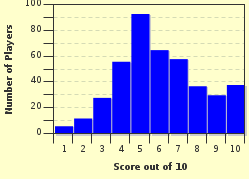Quiz Answer Key and Fun Facts
1. How is the strength of lidocaine usually expressed?
2. Which drug's strength is NOT expressed in units?
3. Which vitamin's strength is measured in units?
4. Which of these drugs is measured in milliequivalents (mEq)?
5. Epinephrine is a commonly seen drug in hospitals. Some people carry epinephrine injection devices (Epi-pens) with them in case of severe, life-threatening allergic reactions. But do you know how epinephrine's strength is most commonly expressed?
6. Nitroglycerin sublingual tablets come in small glass vials with screw-top lids. Each tiny tablet is 0.4mg, equivalent to 1/150th of a(n) ___________.
7. The abbreviation w/v is sometimes seen on pharmaceutical or healthcare product labels. What does w/v stand for?
8. A hospital pharmacy employee receives a request to deliver to the floor a 250ml bag of dobutamine having a concentration of 3.2mg/ml. He finds in stock a 250ml bag labelled "DOBUTamine 3200mcg/ml". Is this the bag he needs?
9. 4mg of dexamethasone in a 1ml vial has the same concentration as 20mg in a 5ml vial.
10. If you needed to compound (manufacture) an oral suspension of pantoprazole with a final concentration of 40mg/20ml, how many 40mg pantoprazole tablets should you crush to dissolve in sterile water and normal sodium bicarbonate to make a batch whose total volume is 400ml?
Source: Author
celicadriver
This quiz was reviewed by FunTrivia editor
crisw before going online.
Any errors found in FunTrivia content are routinely corrected through our feedback system.

